Nathaniel Stern. Artist statement : « I combine new and traditional media in installations and objects, prints, videos and public works, that suspend and amplify our relationships to each other, and our environments. My work highlights taken for granted categories – such as body, language, vision or power – and works to remember each as a dynamic encounter. Here we engage with and feel the world around us. We experience and practice how concepts and matter cooperatively emerge. »

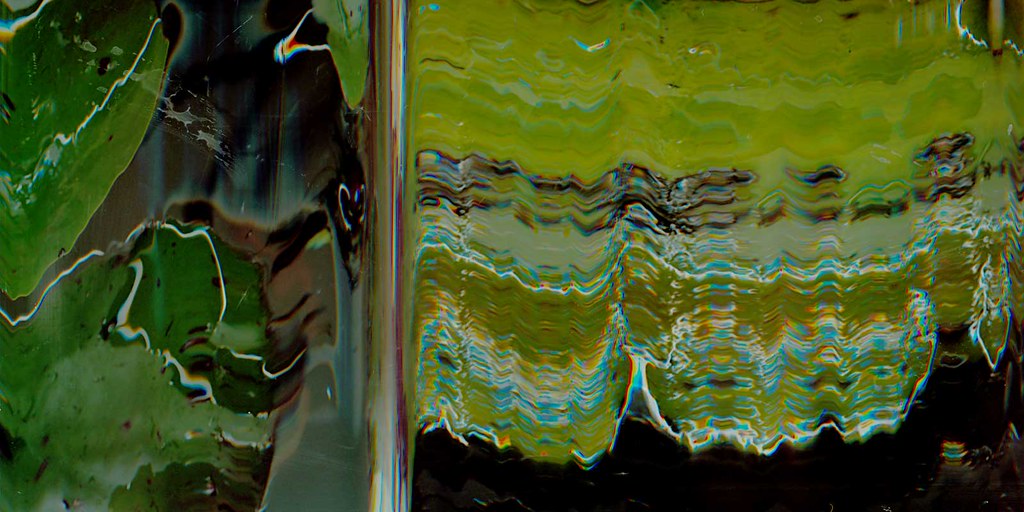

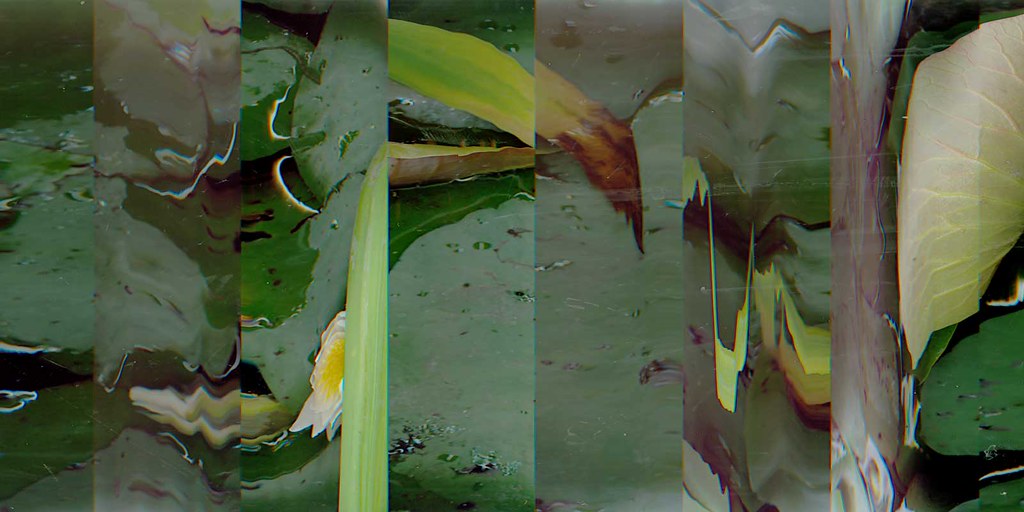
Attunement / listening and craftsmanship
L. B. : To start this conversation1, as an artist of interactive and immersive art, what role does affect and/or emotion play in your works of art?
N. S. : Twofold: first, I do my best to listen to my body, and the world around me – to attune myself to the unconscious responses and activities that I am during the production of a given work. What the piece does, is what it means, and vice versa. Secondly, I believe in the studio critique model, and so I listen to (and watch!) others’ responses to my work, and that feeds back into any changes I might make. Sometimes what a viewer says and what their embodied response is to a given work might differ – so I do my best to pay attention to both. A combination of attunement / listening and craftsmanship are the most vital components to my art’s production.
This very concise twofold statement sets the tone. It also opens further development. When you say that you ‘attune’ yourself with unconscious responses that you ‘are’, does it have to do with seeing, listening or feeling in a specific manner or is it more the impulse of going on or stopping and going elsewhere as attraction to matters or images or sounds, maybe as a movement calling you further. I try to imagine you unfolding the materiality and the technology involved in the crafting of your creative process. Also, what current or force does the ‘studio critique model’ have in your work? At what phase of the process do you invite feedback, does it come from your collaborators, close friends, family members? And as a Fulbright specialist, do you use also the ‘studio critique model’ with other artists’ work as well? Your statement seems to introduce a very complex creative process inflected by whatever affects emerge in the foreground. Also knowing that your images are constructed through a scanner, I suppose that the final product has a non-negligible importance. Could you elaborate in a more concrete manner about these things?
I suppose that for me, the studio critique model attempts to encounter affection and reflection in equal measure. Interestingly, this comes from my background in (believe it or not) fashion design, which I think was great at leading into digital arts production. With fashion, we sketch and play and move, then scientifically make a pattern and craft a piece, then we “put it on”, look at it, see and ask how it “feels,” pay attention to sensation as much as representation, and repeat. There’s an odd tension in the critique model, in that we must avoid symbolic and simple translation from affect to meaning, but must also, once we think-feel with/in a piece, articulate what it is, how it works, and the stakes of that encounter, so we can amplify that work further in any given piece. This is the “current” you ask for in critique. Trying too hard to see what something “means”, and we lose view of what it “does”. Allow it only to work in the non-representational realm, and we can’t make it better – as we never articulate what it does, or how it does, and how to increase its effectiveness through our craft.
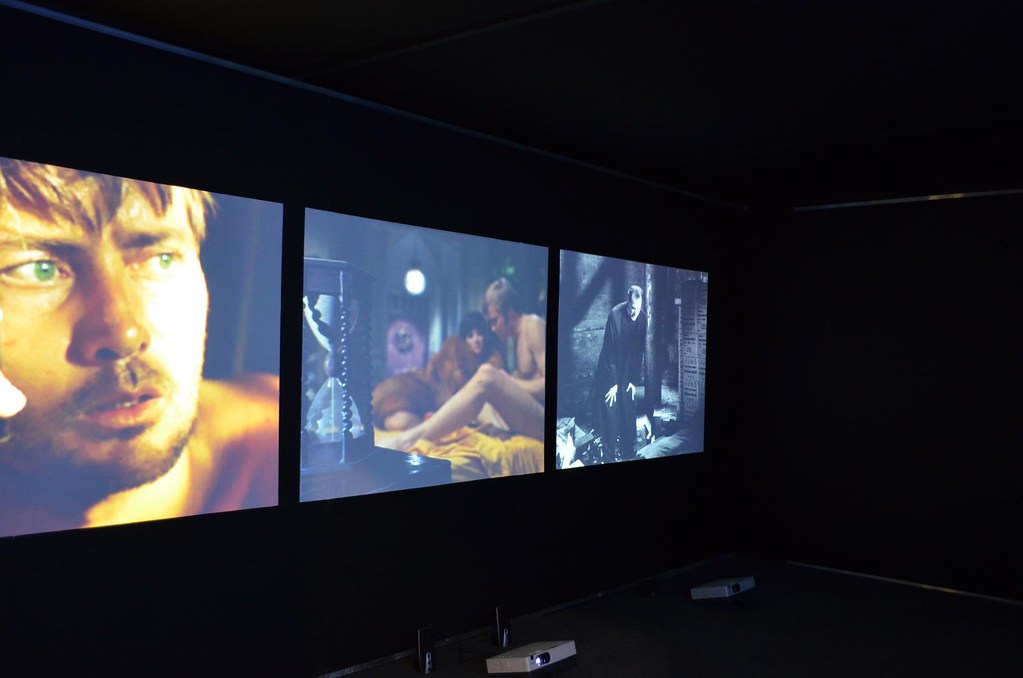
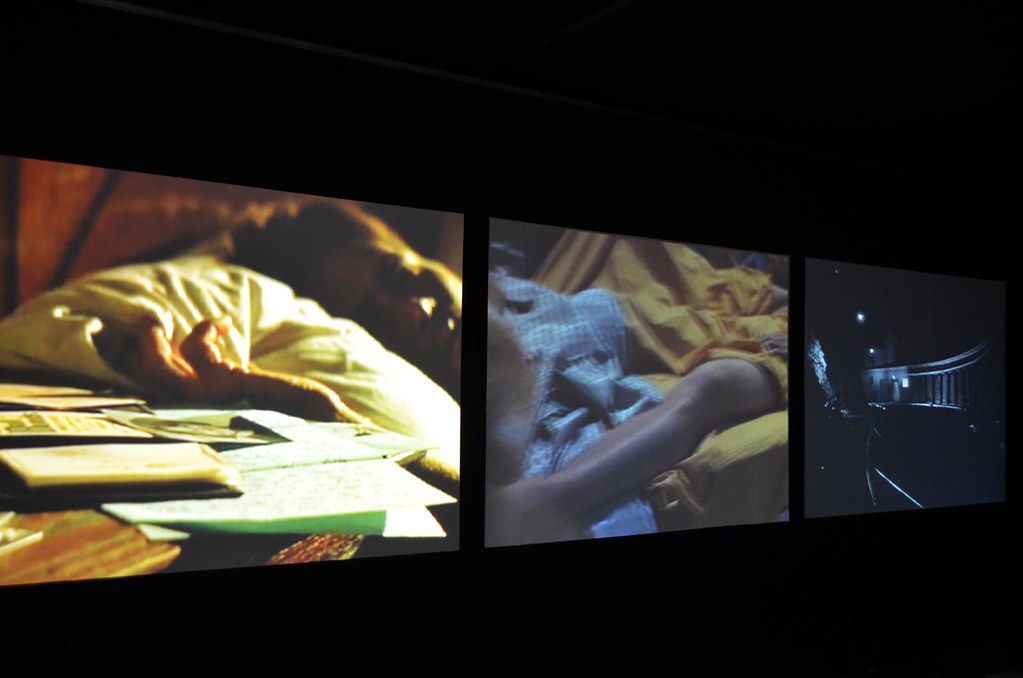
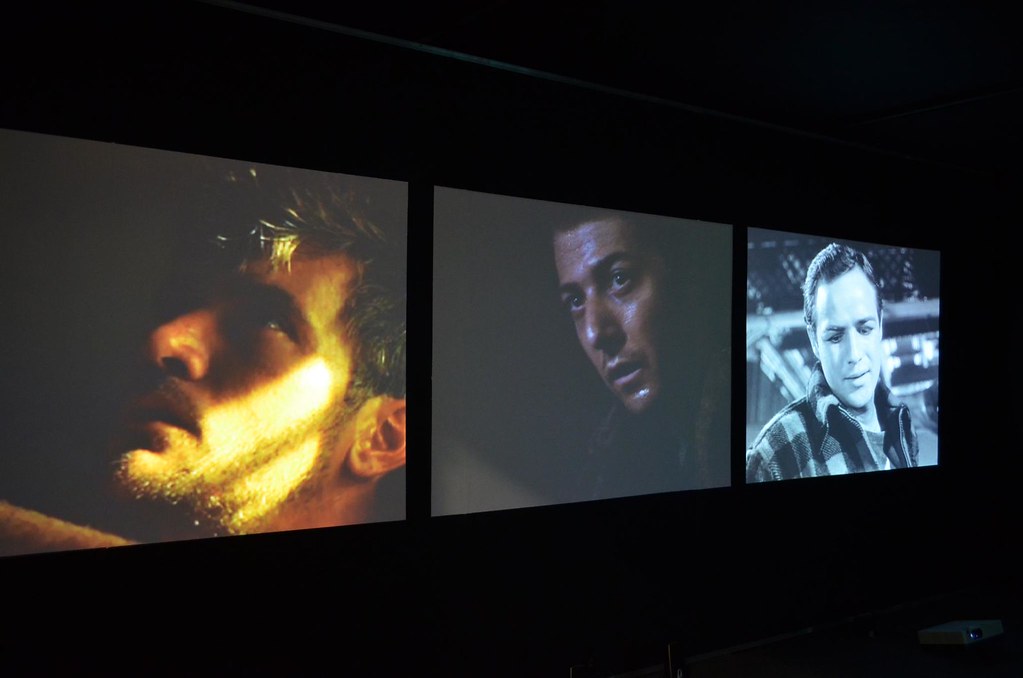
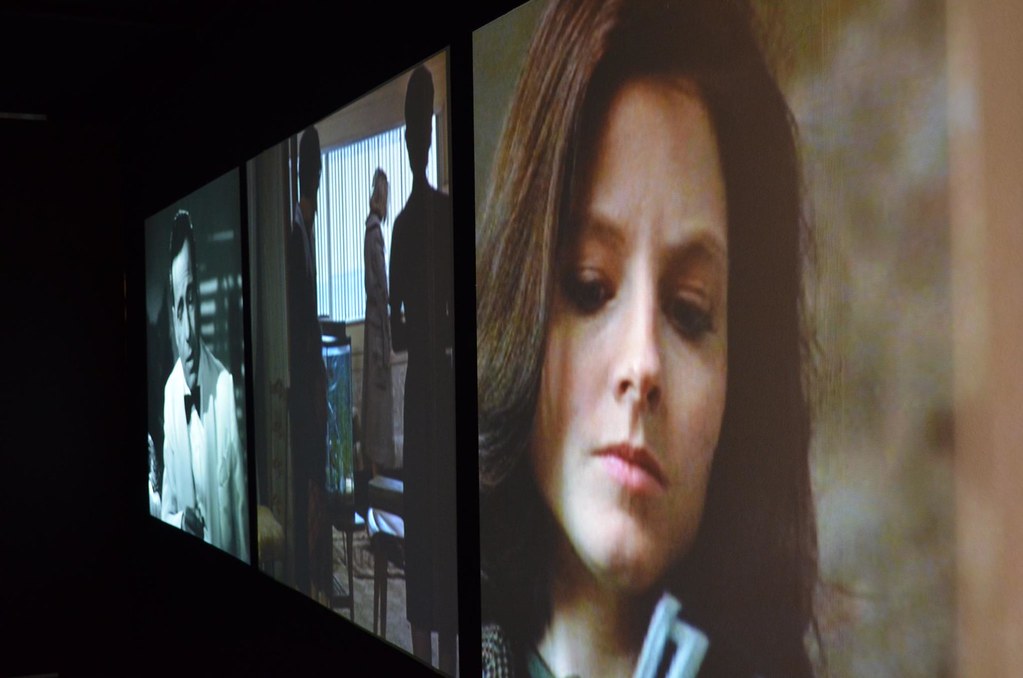
And honestly, I take whatever is available to me in the form of criticism. I will ask my students or assistants, people in the hall, play myself for a time, my wife, my parents, my daughter. Even if they are not my intended audience, I can always learn something. Once at that stage, the trick is to divorce intention from action. The two signs of a great artist-researcher, for me, are : 1. Experimentation and the allowance to fail; 2. Pivoting when the work does something other than what you intended, and following that new path.
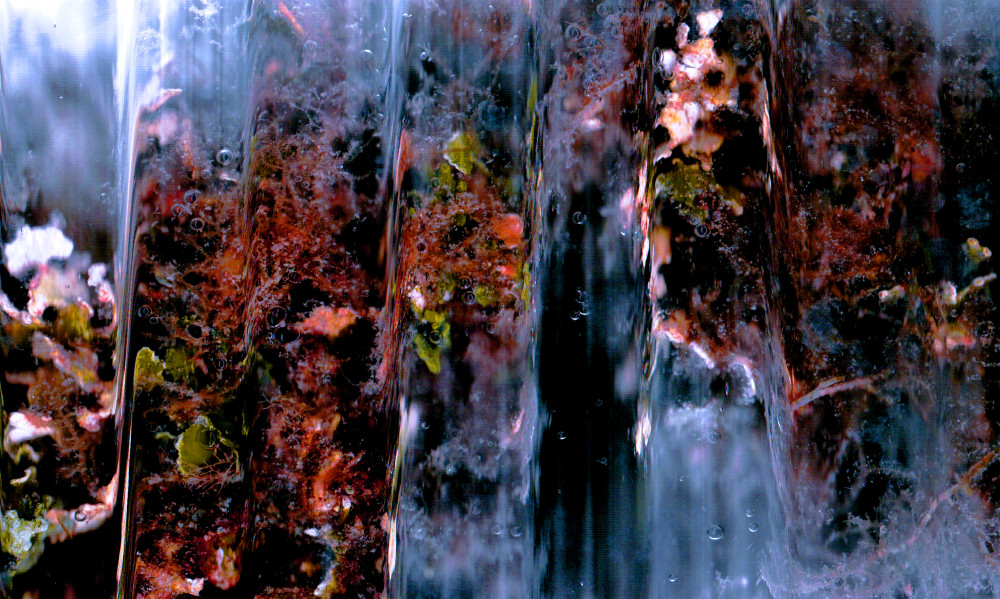

Re : the final “products”. I am not a process artist or conceptual artist. In my practice, experience of the viewer is of utmost importance – whether their experience is of an object, an interactive software, a situation, or, as in most cases, several of these things among others.
Regarding the scanner-based prints, the images themselves fold in the time and space of their performance. They are multidimensional, always more than what we see (and in that, they tell us about vision itself, which is also always more than what we see). Here I’d refer to Massumi’s ideas surrounding “suspending potentials” through art and images, in his V2 interview in Semblance and Event (also summarized in Chapter 2 of my own book) as a good place to get at what I mean here, and also how it pertains to interactive art, beyond the object.
Manifestation trough performance
Do you plan to produce specific affects or emotions during you work?
Sometimes, but I have found that the most productive way for me to think about each work or series, in practice, is as framing and amplifying various (yet specific) conceptual-material formations. How does, for example, our ongoing embodiment relate to signification and vice versa, when speaking and listening? How can space and our relation to it, change what we want, and how we long for it? Massumi might call this a ‘sensible concept’: in short, the manifestation of an idea, through performance. I’m interested in the styles of being and becoming that we activate, engage and encounter in our ongoing formations, and how we might shift them, or become otherwise.
For the benefit of our readers, Massumi develops the ‘sensible concept’ at least in his book entitled Parables for the Virtual: Movement, Affect, Sensation (2002, 90-136). When referring to Stelarc’s art, he proposes the following definitions : “His medium is a body as a sensible concept (p. 90) […] the sensible concept is a materialized idea embodied not so much in the perceiving or the perceived considered separately as in their between, in their felt conjunction (p. 95)”. It seems that for you, if I understand well, the ‘sensible concept’ emerges in the incipient project, during its conceiving and while crafting it. Would you say that it’s a general concept or accumulation of associated sensible concepts emerging in a push and pull movement? If you could elaborate, maybe exemplify, it would be to understand.
It’s different for every piece. When I first made the scanner works, I was simply in a room, asked to make art, and started playing until something emerged. How I’ve thought about what it does has changed over the years, and that feeds into the next phase of the project, too.
Body Language began as a very specific narrative, an invitation “into” a character, and I wanted folks to gesticulate like he did when he spoke. 10 years later, it fed into 3 more pieces that have absolutely nothing to do with characters or narratives, and rather the relations between text and materiality.
Yes, these things emerge in any incipient project, and a given exhibition is a terminal, a stop-point, and endpoint, a starting point. I’m very careful to craft each show towards specific experiences, but each has parameters that shift and change before and after.
Affect and/or emotion
What difference(s) do you make between affect and emotion, if there is any for you?
For me, affect is best defined as unqualified emotion. Human affect is palms sweaty, heart racing, butterflies in the stomach; and emotion is love, or anger, or fear. Our bodies often respond before we do, and once we give name to our affect, emotion might amplify it (and vice versa). Non-human affect, then, is a similar embodied (or material) response, where the agency of things might shift what is, what occurs, and what and how we feel.
It is inspiring to see how you interconnect affect and emotion when you define affect as an “unqualified emotion”. You also highlight things/ is/ occurs/ feel. It gives, at least to me, the idea of a continuum, starting with the physical manifestations of the affect, or the sensations, up to the feelings, or ‘sentiment’, in french when you mention love, and emotions as such, with anger or fear. It makes me think also of William James, when he explains that “the one mental state is not immediately induced by the other, that the bodily manifestations must first be interposed between, and the more rational statement is that we feel sorry because we cry, angry because we strike, afraid because we tremble, and not that we cry, strike, tremble, because we are sorry, angry or fearful, as the case may be) (1884, 189-190)”. The relation (vice versa) that you make between naming an affect and the amplification of the emotion involved is also appealing, do you have any artistic examples in mind? Also, it gets intriguing when you introduce non-human affect, do you include animals and things or do you distinguish them as a different sort of agency?
I think the power of most art is in its intensity – another name for affect. The easiest distinction for me would be contrasting Pollock and Rothko. I like them both, but I’m firmly in the latter camp. Pollock is ever-present in his paintings. He is less making paintings, and more “performing painter”. He famously said “I am nature”. We see gesture, his gestures, in each image. Rothko, on the other hand, gifts us paint, colour, movement, canvas, human, non-human – in relation. It’s terrifyingly beautiful – agonizing in what it means and doesn’t, dangerous it what it could convince us to do, in the wrong hands…
For me there is no doubt that animals and things have agency, make change, are involved in our politics. Is it different from human agency? Yes. How? I don’t know. Luce Irigaray famously said (I’m paraphrasing) that of course there is a difference between men and women; we just don’t know what it is, nor will we ever. I’m there.
If I were to take a stab at this, I’d probably follow Shaviro’s paper on panpsychism in the Non-Human Turn book (it’s not out yet, so I haven’t read it; but I saw the paper when he gave it in Wisconsin). The gist: complexity emerges from lower to higher levels of relation, but perhaps consciousness and what we understand as identity do not themselves only emerge at higher levels; rather, they become complex enough for us to recognize. Perhaps, they are always there, even in rocks or cats, just less complex. I’m not sure about this, not sure if I myself believe it, but it is one of the most provocative papers I’ve seen in a very long time.
Would you say that your approach is rather intuitive, instinctive or in link with cognitive or psychological sciences or philosophical dimensions? If so, which ones?
Yes. I would not separate such things since intuition and instinct are tied to thinking and science and philosophy, all as conceptual-material formations themselves. Perhaps there are times in my process where I might try to attune myself to my environment more (perhaps this is what we call intuition), and other times where I craft my work to create specific encounter (maybe this is cognitive and scientific), but there isn’t one without the other.
Your approach then seems to be enacted in a kind of circuit from outside in to inside out, from bodily impressions to idea exploration, maybe from the bottom up. But is it also from idea exploration to bodily impressions through the materialization of your emerging composition?
Sure, I can go with that! I’d chicken-egg it, though. It’s less linear, and more implicit/enfoldings.
Emotions felt and observed
What emotions do you feel towards your work of art and what emotions have you observed in the public and concerning which work of art?
Often, I’ve heard people describe their encounters as intense – which is probably more associated with affect than emotion. Depending on the piece, emotions have also been described as wonder, longing, curiosity, precarity, fragility, enjoyment, and active.
In general, many people after experimenting an immersive or interactive installation express themselves with onomatopoeias or by saying wow / special / incredible… It seems that the bodily feeling needs a certain time to process, to normalize the effects and even to metabolize them. After reflecting, they start to find words that translate their experience. What do you think intense means? Was this intensity encountered with the same piece or different pieces? Does it correspond to specific moments or to the whole experiencing, the whole event? And from your own experimentation, would you have any examples?
I got ahead of this in some of the questions above. I think of intensity as synony mous of, or at least close to, affect. Things can be more or less intense, more or less affective, and they are both embodied/material/non-representational responses, that are not qualified (… yet). I agree with much of what you say later – or in other words, affection and reflection.
My hope is that all my work creates some form and level of intensity, to later reflect on, and feedback into. It ebbs and flows, stops and starts, is momentary and momentous and continuous.
So that makes this a harder question: Does it correspond to specific moments or to the whole experience, the whole event? It’s hard because it’s yes to all of them, despite them seeming to be distinct. If we think of events as continuous, as only stop-points (moments) in hindsight, it makes more, if you’ll forgive my ambiguous pun, sense. Styles of movement within situations can create intensity, as do the moments before, after, during, when we recognize them, which then feed back into sensation and experience.
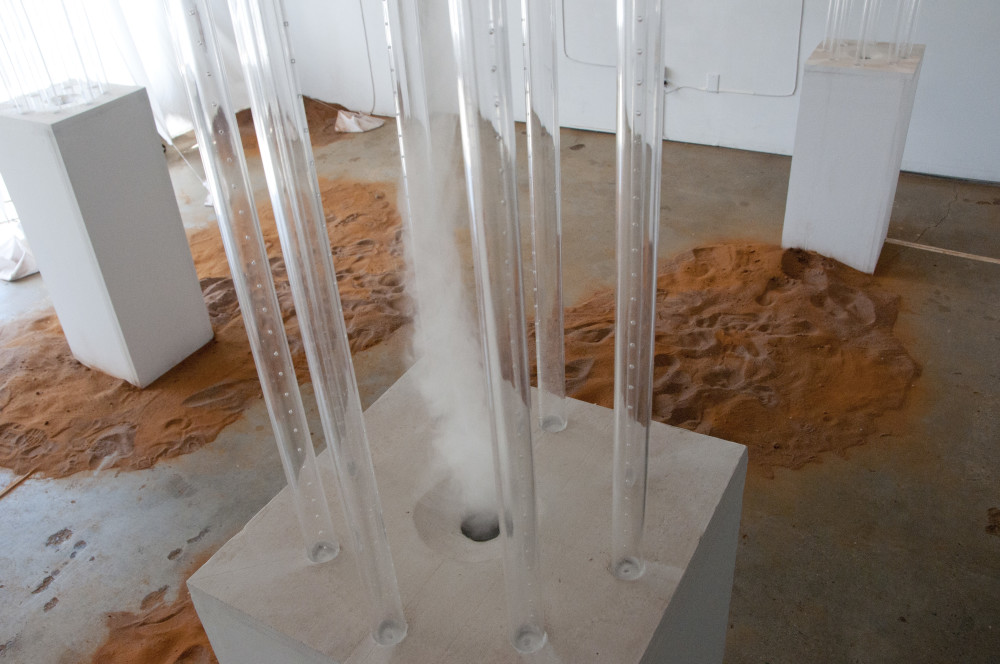

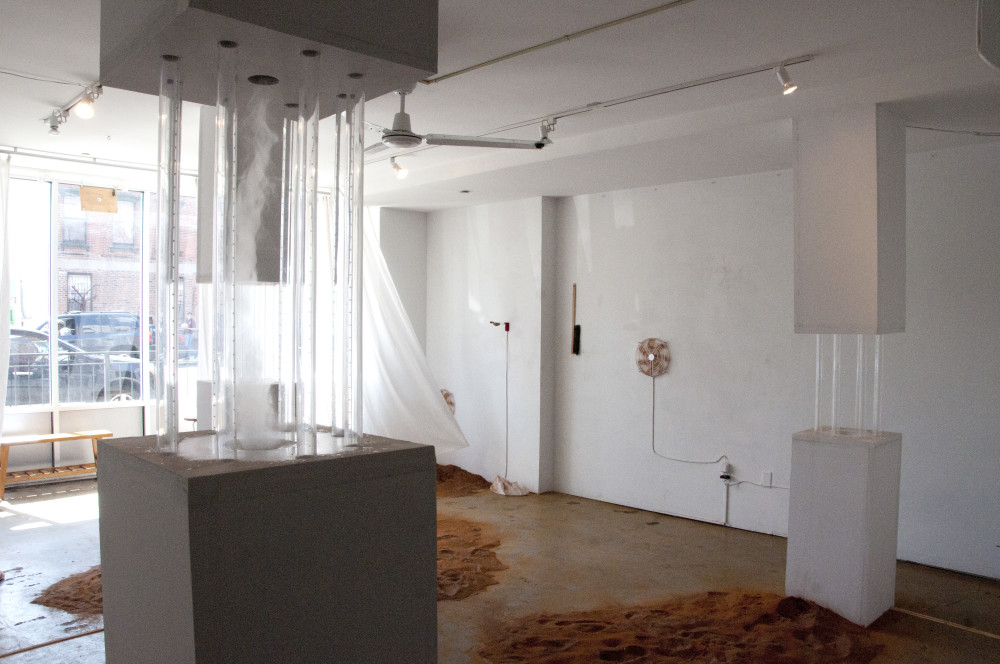
I suppose my work with Erin Manning is a good example. The entire room in The Smell of Red has a kind of mood, or vitality, a composition of component parts that is felt, thought, sensed, as soon as one walks in, and thereafter. The magical “moments” are when the tornadoes disappear, or reappear (more slowly) with passersby or the opening and closing of doors, or when the sifters release spice. But when we see these, and re-cognize them for what they are, it’s that feedback between signification and sensation, cause and effect on the one hand but larger, non-linear interferences and configurations/incorporations on the other – that’s where the magic of intensity and agency that is larger than what we “know” can happen.
Do these emotions, formed or un-formed, make you change your artistic intentions, and if so, how?
Yes. This is the shift from affection to reflection, from listening to craftsmanship. If I hear or see a significant response (qualitatively and quantitatively) to a given work, I will most often look for its cause, and try to amplify it. This is true even if what the work does is not aligned with my original intent (so long as it is interesting!).
Could you illustrate the ‘cause’ and the ‘amplification’?
When I first started making the scanner-based work, I thought of it as performative – in the vein of Jackson Pollock. Watch the original video from 2005 or so, and you’ll see how differently I talked about it back then (I’m also thinner and less gray-haired in that video. Both videos are on this page, newer one at the top, older one at the bottom.
When I went further with this series, I and others noted that it was things I did not perform purposefully – where the earth or matter or animals moved, where it moved me, when I tired and drooped, when there were unintended refractions of light, when the scanner broke or scratched – that were most interesting, telling, intense in the images. I not only changed how I spoke about the work, but how I performed. I sought out different environments, listened to those spaces, my body, the tech, tried to accent and amplify those moments in how I moved with, edited, printed the works.
Intensity with Given Time
Which ones of your artworks have induced the most emotions? Can you describe them?
Tough question, and it depends on what you define as “most”, but, to start with, I am going to stick with what we discussed in our Skype: it is Given Time.
As I sum up on my web site, Given Time simultaneously activates and performs two permanently logged-in Second Life avatars, each forever and only seen by and through the other. Viewers encounter this networked partnership as a diptych of large-scale and facing video projections in a real world gallery, both exhibiting a live view of one avatar, as perceived by the other. An intimate exchange between dual, virtual bodies is transformed into a public meditation on human relationships, bodily mortality, and time’s inevitable flow. The slideshow at the top has a video as well as images.
I can tell you that the images on your Web site are all intense and inspiring, not to say that they “create a visceral aesthetic ”, as you say.
To create, as I explained in my work, a visceral aesthetic, these custom-designed and life-sized “bodies” are hand-drawn in subtly animated charcoal, graphite and pastel. The audience is invited to physically walk between them; they’re able to hear and see them breathing, witness their hair blowing in the wind, pick up faint sounds such as rushing water or birds crying out from the surrounding simulated environment. Here, an intimate exchange between dual, virtual bodies is transformed into a public meditation on human relationships, bodily mortality, and time’s inevitable flow.
It really does. Your images are powerful. With the sounds of breathing, birds, water etc., within the scenography of the screens installation, the mixed reality must be even more powerful. It has to do with a mixture of the luminescent colours and the dynamism of the drawing, the size of the character contrasting with the landscape and the appearing-disappearing of the avatar, also with the walking on the water, etc. Who is Ross?
Earlier, you referred to Felix Gonzales, the notion of gift and the theme of longing as the central affects. If you feel like it, could you tell us more of the story that is behind it, and how it echoes any intimate relationship, between lovers or intimate friends, on a universal level?
The piece has two core inspirations (and overall, it’s a dedication to my wife, Nicole Ridgway). The first is Felix-Gonzales-Torres’ Untitled (Perfect Lovers), which is just two battery operated clocks, set the exact same time. Slowly but surely, they fall out of sync, then one dies, then the other. That’s it. But the piece becomes utterly devastating when you find out he made it the day he learned his partner, Ross Laycock, was HIV positive.
I wondered, what would happen if we removed bodies, and removed time, from the relationship Gonzales-Torres sets up? What would that do?
Unlike the Gonzales Torres piece, two “im-material” avatars do not ask us to reflect on private grief or public yearning, on loss, death or desire.
Instead, they ask, “When we have already given everything – our desires, bodies, and time – what then is left to give?”
This brings me to the second inspiration, Derrida’s book, Given Time. He, like me, believes that what is left to give, when we have already given everything, is the only true gift: that of reciprocity; that of love.
All we can give is the potential of our actions with and towards one another.
By “most”, I meant the closest affective relationship with your artwork, the most joyful or surprising result, the most demanding or deceiving process, the most challenging difficulties which is to say, different kind of intensities. Any other examples?
Same piece. It was surprising that people spent hours “giving their time” to my versions of Felix and Ross. They stared, shifted from foot to foot, laughed, cried, lay down. There was something there.
On the production side, too; it seems like such a simple idea, but to achieve the aesthetic I wanted within that environment, and then translate that back, again, to a physical space was deceptively difficult.
The companion chapter
Have you written any articles or done any interviews that deal with affect or emotion with regards to your works of art?
Very much so! I’d say my book, Interactive Art and Embodiment: The Implicit Body as Performance 2013, an Arts Future Book with Gylphi Press and more importantly the companion chapter look specifically at these things: “In Production (A Narrative Inquiry on Interactive Art)”.
In my book, I argue that interactive art suspends and amplifies the ways in which we experience embodiment as per-formed, relational, and emergent. I provide many in-depth case studies of contemporary artworks that develop a practice of embodied philosophy, setting a stage to explore how we inter-act and relate with the world. I offer a critical framework for analyzing interactive artworks and what’s at stake in our encounters with them, which can be applied to a wide range of complex and emerging art forms. Here bodies, matter, and their matters, are implicated as always unfolding and enfolded to make what is. At stake is the rehearsal of that making, the ways we perform our bodies, media, concepts, and materials.
Your companion chapter, as you say, is another form of case study, maybe the case study of your creative production. It “is a somewhat fictionalized story that folds the anxieties and emotion of an artist/PhD student into the making and thinking, moving and feeling, of digital art” (p. 253).
Before ending our conversation, what affect(s)has driven you through Body and Language (2000-2013)? What constellation of affects have driven the participants across body, text and movement?
I feel like, perhaps, the chapter you reference might do what you are asking for best – and it would be hard to distil it down to a few sentences. That being said, I’ve now installed Body Language, as a suite, twice, all together, for several months each time. Overall, people slow down, listen with their bodies, speak with their space, encounter matter, differently – at least for the time in the gallery, often for a time afterwards, and sometimes, if I’m lucky, it continues to come back to them – that practice, that thought, that possibility, in the day to day.
Notes
[1] I am very grateful to Adam Szymanski for his copy-editing help.
